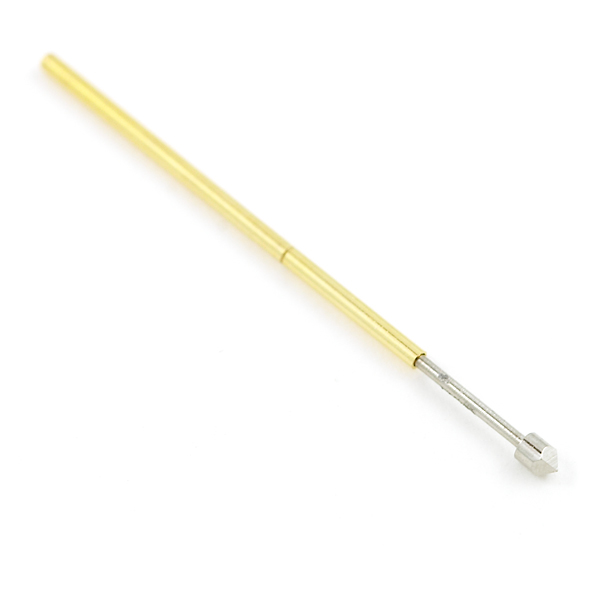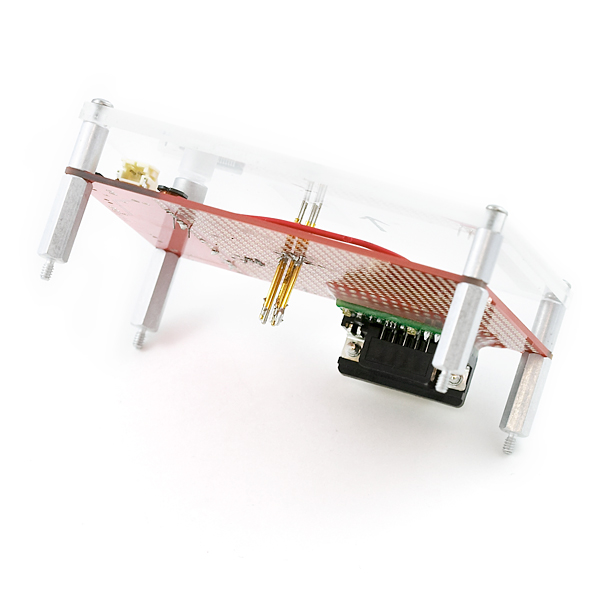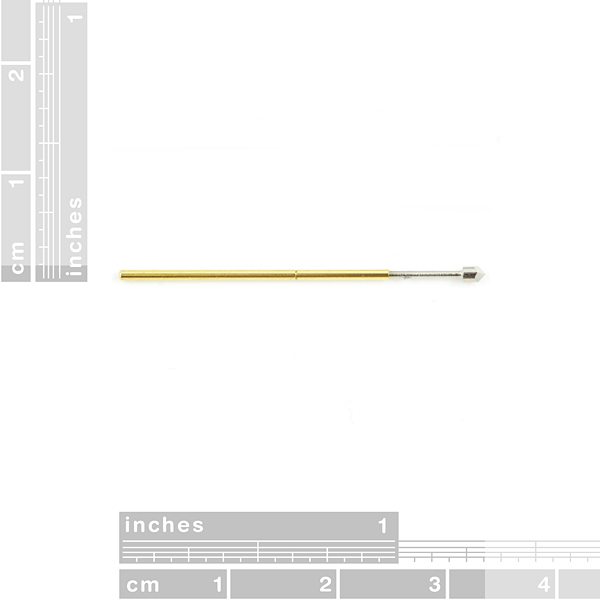These 33mm (1.3") spring loaded pogo pins are great for programming and applications where you don't always want headers soldered onto your boards. We use them for our programming jigs in production. The pins fit snugly into most standard perf board holes. Solder them just like you would normal wire.
- Length: 1.3" (33mm)
- Travel: 1/4" (6.5mm)
- Head size 0.06" (1.5mm)
Pogo Pin w/ Chiseled Tip Product Help and Resources
Constant Innovation in Quality Control
December 11, 2013
In this article, we share our recent advancements in quality control. Along with making our tests more thorough, we have also made them more efficient and robust.
Core Skill: Soldering
This skill defines how difficult the soldering is on a particular product. It might be a couple simple solder joints, or require special reflow tools.
Skill Level: Noob - Some basic soldering is required, but it is limited to a just a few pins, basic through-hole soldering, and couple (if any) polarized components. A basic soldering iron is all you should need.
See all skill levels
Comments
Looking for answers to technical questions?
We welcome your comments and suggestions below. However, if you are looking for solutions to technical questions please see our Technical Assistance page.
Customer Reviews
No reviews yet.





Hi, I want to make a 2by3 pin ICSP programming header using 6 Pogo-pins. I'm thinking of using a pair of 1" square Proto-boards separated by standoffs. I'd solder the 6 Pogo-pins to the back Proto-board like this ::: Anyway... my first question is: will the pogo pins fit through the holes on the Proto-boards? ...and which Pogo pin to get; round, pointed or chiseled?
How about adding a pogo eagle library with all of the pin types, clearance holes for the upper board, test pad that match the pins, both round and square, and anything else that would be useful when making a jig.
Hi, I am looking to establish a temp connection between my Arduino Uno and ADXL 335 accelerometer. Which Pogo pins should I go for ? the chiseled ones or the round tip ones ? Or will pogo pins even work ?
Wow... I've tried reading the desciption a few times, stared at the pictures for a while, but... what is this for exactly?
Really don't get it...
They're Basically a way to get a quick solid connection between boards for the purposes such as programming. We have a tutorial that explains how we use them; http://www.sparkfun.com/commerce/tutorial_info.php?tutorials_id=138